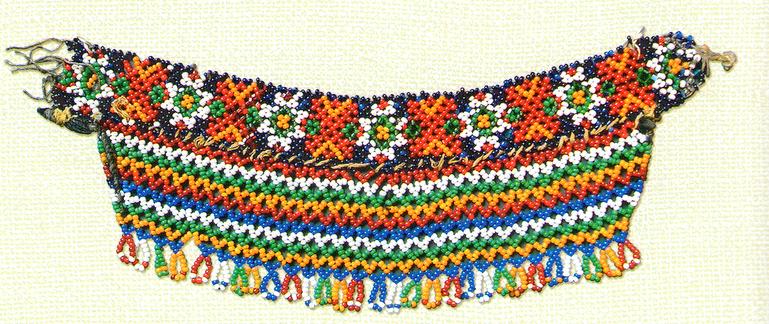 Researchers claim that the first jewelry appeared in the late Paleolithic, the same era of cultural development that is associated with a large number of mysteries. Scientists still cannot explain where and why things that had no practical significance appeared in the life of a person of that time. Things that were not tools, were not weapons or clothing. Cave drawings had no use in life, but they appeared. Small figurines of animals and people, necklaces, pendants, bracelets - what are they and why did a person need them then? Archaeologists have puzzled over this mystery for a long time. But ethnographers who observed tribes living in South America, Oceania and Equatorial Africa saw similar phenomena. These tribes are still hidden from prying eyes, from the eyes of civilization, live in the jungle, which is not so easy to get to, and due to their isolation, they still lead a primitive life.
Researchers claim that the first jewelry appeared in the late Paleolithic, the same era of cultural development that is associated with a large number of mysteries. Scientists still cannot explain where and why things that had no practical significance appeared in the life of a person of that time. Things that were not tools, were not weapons or clothing. Cave drawings had no use in life, but they appeared. Small figurines of animals and people, necklaces, pendants, bracelets - what are they and why did a person need them then? Archaeologists have puzzled over this mystery for a long time. But ethnographers who observed tribes living in South America, Oceania and Equatorial Africa saw similar phenomena. These tribes are still hidden from prying eyes, from the eyes of civilization, live in the jungle, which is not so easy to get to, and due to their isolation, they still lead a primitive life.
 The researchers used the method of analogy, which often helps to find solutions to unusual but similar phenomena. This allowed them to conclude that plastic and primitive painting, the oldest types of art, are closely related to magic and magical rituals. When a person draws a hunting scene, depicts people and animals in sculptural figures, these are elements of a magical ritual, a rite, during which the beast is conjured so that the hunt or other action depicted with the help of art the day before would contribute to success in this vital matter. Things were applied to the body: necklaces, bracelets, pendants, or red ocher was painted. All this was aimed at protecting a person, had a magical character, directed the action of the amulet on the life and health of each member of the tribe. Later, in addition to the magical benefit, people began to observe the beauty of amulets, when creating them, they began to pay attention to the aesthetic pleasure of the appearance and deliberately create this beauty. Such jewelry has become a wonderful addition to clothing: pendants, necklaces, bracelets, rings, etc.
The researchers used the method of analogy, which often helps to find solutions to unusual but similar phenomena. This allowed them to conclude that plastic and primitive painting, the oldest types of art, are closely related to magic and magical rituals. When a person draws a hunting scene, depicts people and animals in sculptural figures, these are elements of a magical ritual, a rite, during which the beast is conjured so that the hunt or other action depicted with the help of art the day before would contribute to success in this vital matter. Things were applied to the body: necklaces, bracelets, pendants, or red ocher was painted. All this was aimed at protecting a person, had a magical character, directed the action of the amulet on the life and health of each member of the tribe. Later, in addition to the magical benefit, people began to observe the beauty of amulets, when creating them, they began to pay attention to the aesthetic pleasure of the appearance and deliberately create this beauty. Such jewelry has become a wonderful addition to clothing: pendants, necklaces, bracelets, rings, etc.
The very first jewelry-amulets were made from animal teeth, tusks, shells, amber or other materials that were generously supplied by the surrounding nature. Then jewelry began to be made taking into account the technical development of mankind, from new materials or methods of processing old ones. As soon as mankind found a new material, it tested it as a basis for creating jewelry: clay, metal, glass. And the latest technologies gave new ornaments, shapes, meanings. Archaeologists often find beads of various shapes, which were assembled into necklaces or bracelets, with which they decorated clothes.
 The most popular artificial material for making beads has become glass - it was most liked by both craftsmen and those who wore jewelry. Researchers believe that the technology for creating glass was invented during many experiments with some components of ceramic raw materials, in addition, the temperature regimes for processing the components were also of great importance. And that initially faience was invented, and glass was already after other attempts. The technology for making glass has many differences and features depending on the place where it is created, so you can easily determine where this or that find came from - it is enough to analyze the chemical composition of the glass mass and its physical properties. In the Middle East in the 5th millennium BC, beads made of proto-glass mass with a coating similar to glass, as if glazed, were found. Archaeologists even discovered glass, which is the oldest, in the ancient Egyptian remains of the culture of the end of the 3rd millennium BC. By the middle of the 2nd millennium BC. belong to the oldest glass products known to the scientific world, found in Ancient Egypt. However, this does not exclude the version that even earlier technologies could have existed in the civilizations of the Tigris and Euphrates valleys, or among the Phoenicians, or on the island of Crete. So we see that the question of where exactly the technology of creating glass was born remains open - because glass products, different in their physical properties and chemical composition, were found in different places at different times.
The most popular artificial material for making beads has become glass - it was most liked by both craftsmen and those who wore jewelry. Researchers believe that the technology for creating glass was invented during many experiments with some components of ceramic raw materials, in addition, the temperature regimes for processing the components were also of great importance. And that initially faience was invented, and glass was already after other attempts. The technology for making glass has many differences and features depending on the place where it is created, so you can easily determine where this or that find came from - it is enough to analyze the chemical composition of the glass mass and its physical properties. In the Middle East in the 5th millennium BC, beads made of proto-glass mass with a coating similar to glass, as if glazed, were found. Archaeologists even discovered glass, which is the oldest, in the ancient Egyptian remains of the culture of the end of the 3rd millennium BC. By the middle of the 2nd millennium BC. belong to the oldest glass products known to the scientific world, found in Ancient Egypt. However, this does not exclude the version that even earlier technologies could have existed in the civilizations of the Tigris and Euphrates valleys, or among the Phoenicians, or on the island of Crete. So we see that the question of where exactly the technology of creating glass was born remains open - because glass products, different in their physical properties and chemical composition, were found in different places at different times.
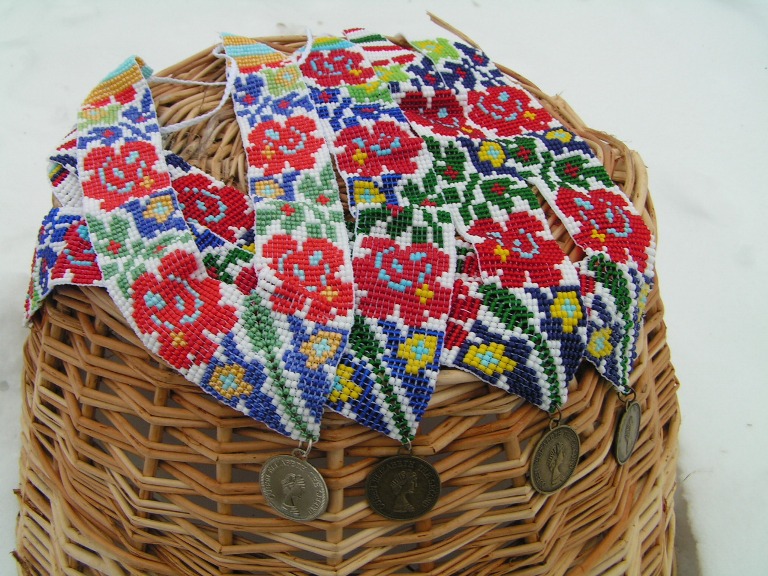 The subtleties of glassmaking were known at the beginning of the new era in Syria, Egypt, India, Phoenicia, Persia, Mesopotamia, Assyria, and later in Western Europe (for example, the Celts already knew the technology), in the Caucasus. According to archaeological excavations, glassmaking technologies were also used at the mouth of the Dnieper River. In the 2nd-3rd centuries. Rome took on the role of the center of glassmaking, and from it the craft went to the Rhine provinces of Rome - to the Franks and to Byzantium (Eastern Roman Empire). Historians date Byzantine glassmaking from the 4th century, when the title of the capital of the Roman Empire passed from Rome to Constantinople (330). The new capital was just being built, equipped, and masters of various crafts were only welcome there.
The subtleties of glassmaking were known at the beginning of the new era in Syria, Egypt, India, Phoenicia, Persia, Mesopotamia, Assyria, and later in Western Europe (for example, the Celts already knew the technology), in the Caucasus. According to archaeological excavations, glassmaking technologies were also used at the mouth of the Dnieper River. In the 2nd-3rd centuries. Rome took on the role of the center of glassmaking, and from it the craft went to the Rhine provinces of Rome - to the Franks and to Byzantium (Eastern Roman Empire). Historians date Byzantine glassmaking from the 4th century, when the title of the capital of the Roman Empire passed from Rome to Constantinople (330). The new capital was just being built, equipped, and masters of various crafts were only welcome there.
Our fellow countrymen of that time had the opportunity to admire glass jewelry before they began to produce them themselves – thanks to open trade routes. How exactly jewelry and glass products got to our homeland, historians still do not know for sure, but the fact of their presence on our lands was recorded. Single beads were found, belonging to the early period of the Trypillian culture (Eneolithic, 4th-1st millennium BC), or the Usat group (Bronze Age, mid-3rd millennium BC).
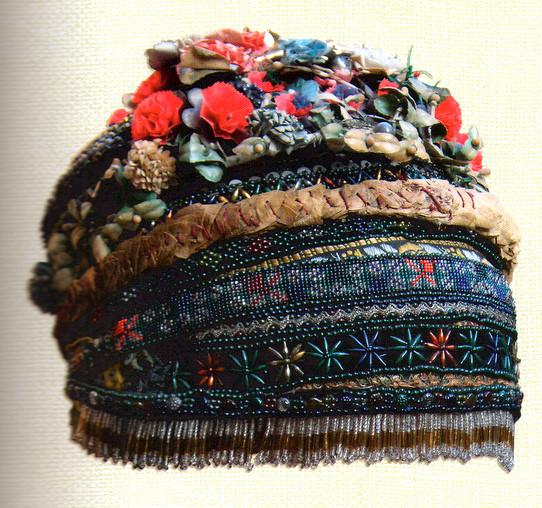 In the 1st millennium BC and later, many more archaeological finds of protoglass products and glass beads were excavated. Many ornaments made of such material were found by archaeologists in the Northern Black Sea region, not in the territories of the Greek colonies (7th century BC - 4th century AD). They had very close ties, both cultural and economic, with the ancient metropolises. For art historians, beads with glass inclusions are of particular artistic importance, they resemble small eyes.
In the 1st millennium BC and later, many more archaeological finds of protoglass products and glass beads were excavated. Many ornaments made of such material were found by archaeologists in the Northern Black Sea region, not in the territories of the Greek colonies (7th century BC - 4th century AD). They had very close ties, both cultural and economic, with the ancient metropolises. For art historians, beads with glass inclusions are of particular artistic importance, they resemble small eyes.
Jewelry made of protoglass is also found among the finds dating back to the 7th century BC - 2nd century BC - the period of Scythian culture. During this period, from the 6th century BC, whole rows of paste beads of various colors were found in Scythian burials, and they were worn not only by women, as expected, but also by men. The colors then favored were white, blue, black and brown. Bracelets-bandages were made from paste beads, or glass beads as well. In Scythian times, jewelry with "eyes" was very common. These beads were used to trim clothing - sleeves along the edge and just above the elbows.
Glass beads are also found by archaeologists among the monuments of later cultures. Conducting chemical and technological analysis of glass products, scientists were able to establish that in the Dnieper region at that time, namely the 1st millennium AD, at least three glassmaking schools produced their products: Egypt, Syria and Byzantium. The Syrian school was the most widespread, glass products of its masters are most often found for the period of the 8th-9th centuries. Corals of Byzantine origin are found much less often.
 Glass jewelry was also known in Kievan Rus, whose population was very fond of them. Almost until the 11th century, such jewelry was made by foreign craftsmen, not by their own craftsmen. In the 10th century, Syria supplied its products. Most often, these were two types of beads: silver-plated or gilded - silver or gold foil was placed inside, respectively; and beads made of colored glass. Even then, beads began to appear among these beads, but so far they were made only in those centers of glassmaking where traditions were developed and honored. In the 5th-13th centuries, many glass products came to Rus from Byzantium, because this country was very developed in glassmaking and deserved the title of leader in this production.
Glass jewelry was also known in Kievan Rus, whose population was very fond of them. Almost until the 11th century, such jewelry was made by foreign craftsmen, not by their own craftsmen. In the 10th century, Syria supplied its products. Most often, these were two types of beads: silver-plated or gilded - silver or gold foil was placed inside, respectively; and beads made of colored glass. Even then, beads began to appear among these beads, but so far they were made only in those centers of glassmaking where traditions were developed and honored. In the 5th-13th centuries, many glass products came to Rus from Byzantium, because this country was very developed in glassmaking and deserved the title of leader in this production.
The ancient Russian tradition of making and processing glass arose at the end of the 10th century. At that time, beads were already beginning to be found, although they had not yet acquired the skill that was inherent in foreign masters. But the political and economic growth of Kievan Rus at that time contributed to the development of new and already familiar crafts. Among them was glassmaking. Byzantium had a great influence on the formation of the culture of our homeland at that time, so the significant influence of this school can be seen in the production of glass. Researchers believe that the joint construction of the Tithe Church, which was built together by our and Greek masters, was the beginning of the emergence of a glassmaking school in our region. Perhaps, joint work transmitted the basic skills of creating, first, mosaic decoration of the temple from the inside, and then independent searches for the laws and techniques of creating glass beauty. When our masters observed the creation of colored smalt, some of which was not brought from Byzantium, but was produced on site, they were able to draw their own conclusions about the appearance of multi-colored glass from sand, lead, and other elements of glass ritual. Of course, the secrets and subtleties of creating beauty remained unknown, such as the technology of discoloration and coloring or the components of the mixture. But one can notice the correspondence of the glassmaking of Kievan Rus to Byzantine principles in the manufacture of rings and glass beads. According to this technology, unlike the methods of the Middle East, heated soft glass rods were wound onto a metal rod, and each bead was made in this way. And in the Middle East, beads were usually cut from cut glass tubes as a mass product, not artificial.
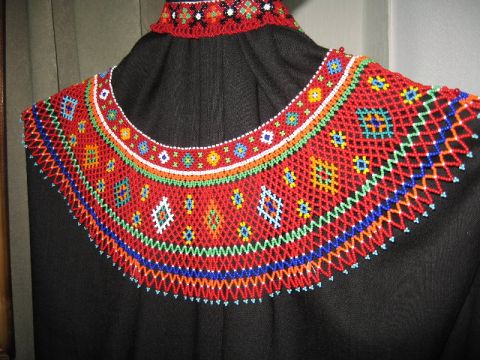 The material for creating the first glass works was opaque two-layer lead-silica glass and mineral dyes were added to it. This gave the glass its traditional yellow, brown or green color. A little later, closer to the middle of the 11th century, local craftsmen, working with the raw materials of their area, found a way to make three-layer potassium-lead-silica glass. It had a different, lower melting point. This technology made it possible to produce the so-called long glass, which had interesting properties: it retained its plasticity for a long time, which allowed longer and better work on the product, and to increase the number of techniques used. The latest technology that appeared at that time in Kievan Rus' contributed to the establishment of the production of transparent glass, which was unusual, and opaque multi-colored glass. The latter quality became a feature of the ancient Russian glassmakers, giving their products uniqueness. And in the second half of the 12th - early 13th centuries. products from Kiev glass and the glass itself became known and widespread far beyond Kiev, and went to the northwestern peripheral lands of Russia, the Baltic States, and Poland. Two-layer opaque glass gradually expanded its areas of application - it began to be used as enamel for jewelry, as a glaze for ceramic products, and mosaic smalt was made from it. In addition to the chemical composition and characteristics, Ukrainian masters also found their own special artistic and aesthetic criteria when making jewelry. They learned to give interesting shapes to beads: by winding a heated glass rod onto a metal rod, they obtained zone, ellipsoidal, spherical, biconical, ribbed, cylindrical or twisted beads. The color was uniform, without any inclusions of other colors.
The material for creating the first glass works was opaque two-layer lead-silica glass and mineral dyes were added to it. This gave the glass its traditional yellow, brown or green color. A little later, closer to the middle of the 11th century, local craftsmen, working with the raw materials of their area, found a way to make three-layer potassium-lead-silica glass. It had a different, lower melting point. This technology made it possible to produce the so-called long glass, which had interesting properties: it retained its plasticity for a long time, which allowed longer and better work on the product, and to increase the number of techniques used. The latest technology that appeared at that time in Kievan Rus' contributed to the establishment of the production of transparent glass, which was unusual, and opaque multi-colored glass. The latter quality became a feature of the ancient Russian glassmakers, giving their products uniqueness. And in the second half of the 12th - early 13th centuries. products from Kiev glass and the glass itself became known and widespread far beyond Kiev, and went to the northwestern peripheral lands of Russia, the Baltic States, and Poland. Two-layer opaque glass gradually expanded its areas of application - it began to be used as enamel for jewelry, as a glaze for ceramic products, and mosaic smalt was made from it. In addition to the chemical composition and characteristics, Ukrainian masters also found their own special artistic and aesthetic criteria when making jewelry. They learned to give interesting shapes to beads: by winding a heated glass rod onto a metal rod, they obtained zone, ellipsoidal, spherical, biconical, ribbed, cylindrical or twisted beads. The color was uniform, without any inclusions of other colors.
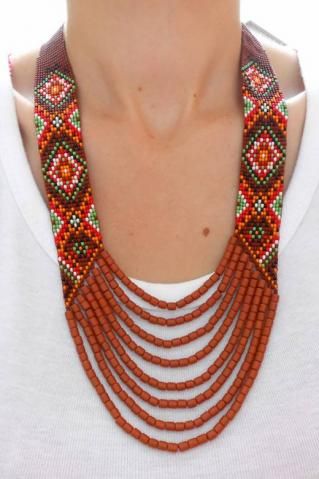 In the 10th century, bracelets first appeared in Ukraine, they were also called wristbands, hoops, and constitute a separate group of jewelry. They immediately became widespread and by the 11th century became very popular among connoisseurs of glass products. They were worn on the sleeve on bare skin or over the sleeve - on a rolled-up sleeve they looked very unique and beautiful. The color of these bracelets depended on the location: Kyiv craftsmen preferred turquoise or purple colors, Polotsk chose blue, Ryazan - blue and green, Novgorod - brown, black, green colors, Smolensk - red-brown and green. But not only did the bracelets differ in color, but they also had different plastic decor, which was mostly spiral in shape. The method of making such bracelets was quite simple: they twisted a heated blank from several glass rods, then gave it the shape of a hoop by winding it on a stick. All the excess was trimmed off, and the ends of the bracelet were heated again and joined together. The white and yellow threads of blank glass looked great against the blue, black, green, and brown colors of the bracelets.
In the 10th century, bracelets first appeared in Ukraine, they were also called wristbands, hoops, and constitute a separate group of jewelry. They immediately became widespread and by the 11th century became very popular among connoisseurs of glass products. They were worn on the sleeve on bare skin or over the sleeve - on a rolled-up sleeve they looked very unique and beautiful. The color of these bracelets depended on the location: Kyiv craftsmen preferred turquoise or purple colors, Polotsk chose blue, Ryazan - blue and green, Novgorod - brown, black, green colors, Smolensk - red-brown and green. But not only did the bracelets differ in color, but they also had different plastic decor, which was mostly spiral in shape. The method of making such bracelets was quite simple: they twisted a heated blank from several glass rods, then gave it the shape of a hoop by winding it on a stick. All the excess was trimmed off, and the ends of the bracelet were heated again and joined together. The white and yellow threads of blank glass looked great against the blue, black, green, and brown colors of the bracelets.
From the 12th century, glass necklaces and bracelets spread beyond the city and became no less popular in the villages. However, glass bracelets could not surpass the copper bracelets that were so popular with local beauties.
In the second half of the 12th century. Kievan Rus was attacked by Mongol-Tatar invaders, and as a result, glassmaking declined for a while, as did other crafts. Novgorod, Smolensk, and Polotsk were still engaged in the production of glass bracelets for a short time, but over time, these workshops also ceased their activities. Although for a certain time they still maintained the ancient Russian glassmaking at the proper level and did not allow it to completely decline.
 In Kievan Rus, there were many beaded products. The Arab writer Ahmed Ibn-Fadlan traveled in 921-922 to Volga Bulgaria and met the "Rus" on the Ityl River (aka the Volga) on the way. In his "Notes" he noted how the Slavs were fascinated by green bead jewelry. At that time, they did not have any of their own, they only brought them. The writer noticed that the Slavs tried to get these beads by all means and then created necklaces for their women from them. The desire for beauty was so great, however, mostly among the wealthy, because beads were not cheap. In addition to necklaces, beads were used to decorate clothes and were sewn onto hats.
In Kievan Rus, there were many beaded products. The Arab writer Ahmed Ibn-Fadlan traveled in 921-922 to Volga Bulgaria and met the "Rus" on the Ityl River (aka the Volga) on the way. In his "Notes" he noted how the Slavs were fascinated by green bead jewelry. At that time, they did not have any of their own, they only brought them. The writer noticed that the Slavs tried to get these beads by all means and then created necklaces for their women from them. The desire for beauty was so great, however, mostly among the wealthy, because beads were not cheap. In addition to necklaces, beads were used to decorate clothes and were sewn onto hats.
Even in ancient Russian times, the tradition of decorating various cult objects and church fabrics with individual pearl beads began. After the adoption of Christianity, Kievan Rus began, like Byzantium, from where this habit came, to decorate the interiors of churches with expensive fabrics, to sew expensive and very luxurious liturgical vestments. Since then, it has become customary to use fabrics woven and embroidered with gold in churches. According to written records, the craftsmen of Rus sometimes used precious stones or pearls in addition to expensive threads.
 The same expensive decoration was used when decorating icons. Once, a chronicler, telling about the church of St. John Chrysostom (founded in the city of Kholm by Danylo Galician in 1223), mentioned that the prince decorated icons brought from Kyiv with stones, beads and gold. Among those icons was the image of the Savior and the Most Holy Theotokos, given to the prince by Sister Feodora from the Kyiv monastery of St. Feodor. From the time of the Old Russians and until the 15th-16th centuries. beads were not the same as we understand them now. This word also called pearls, artificial and natural. Only later, in the 17th century, the names of these materials began to be distinguished, and beads acquired the meaning that it has today – to denote small beads made of artificial materials. So in the document cited above, the “Galician-Volyn Chronicle”, it may not be about the beads we understand at all, but about pearls. However, it is also likely that artificial materials and beads made from them were used in the decoration of church fabrics and icons. Unfortunately, it is impossible to prove one or another version today, because a large part of the artistic works of the masters of Kyivan Rus and the artistic treasures of that time, including the very valuable chaplets, were irretrievably lost in the fires of the Mongol-Tatar attacks.
The same expensive decoration was used when decorating icons. Once, a chronicler, telling about the church of St. John Chrysostom (founded in the city of Kholm by Danylo Galician in 1223), mentioned that the prince decorated icons brought from Kyiv with stones, beads and gold. Among those icons was the image of the Savior and the Most Holy Theotokos, given to the prince by Sister Feodora from the Kyiv monastery of St. Feodor. From the time of the Old Russians and until the 15th-16th centuries. beads were not the same as we understand them now. This word also called pearls, artificial and natural. Only later, in the 17th century, the names of these materials began to be distinguished, and beads acquired the meaning that it has today – to denote small beads made of artificial materials. So in the document cited above, the “Galician-Volyn Chronicle”, it may not be about the beads we understand at all, but about pearls. However, it is also likely that artificial materials and beads made from them were used in the decoration of church fabrics and icons. Unfortunately, it is impossible to prove one or another version today, because a large part of the artistic works of the masters of Kyivan Rus and the artistic treasures of that time, including the very valuable chaplets, were irretrievably lost in the fires of the Mongol-Tatar attacks.
It is believed that the traditional glassmaking of Ancient Rus was preserved to some extent thanks to glassmaking. The wooded areas of the western outskirts of Rus were able to become a protection from the Mongol-Tatars and their attacks for glassmakers who sought salvation, fleeing from the ancient Russian cities to the forests. There, in the forests, they also found the necessary raw materials to do glassmaking. Their products became dishes and window glass. The production of beads returned much later, both in Rus and in countries that inherited artistic traditions.

From the first half of the 17th century, glass began to be produced in Russia. The technology of glassmaking was unknown to the Russians at that time, so our compatriots helped them master new skills. Master glassmakers worked at the first glass factories near Moscow. Ukrainian products were consumed in Russia for a long time, while local craftsmen acquired the skills necessary for glassmaking. Ukrainian glassworks were widely known in our country. In the 18th century, Russia first began producing glass beads, beads, glass jewelry, and mosaic glass at the state level. These products were very complex in terms of manufacturing technology, and their first production began in 1754 at a factory near St. Petersburg, in Ust-Rudytsia, founded by M.V. Lomonosov.
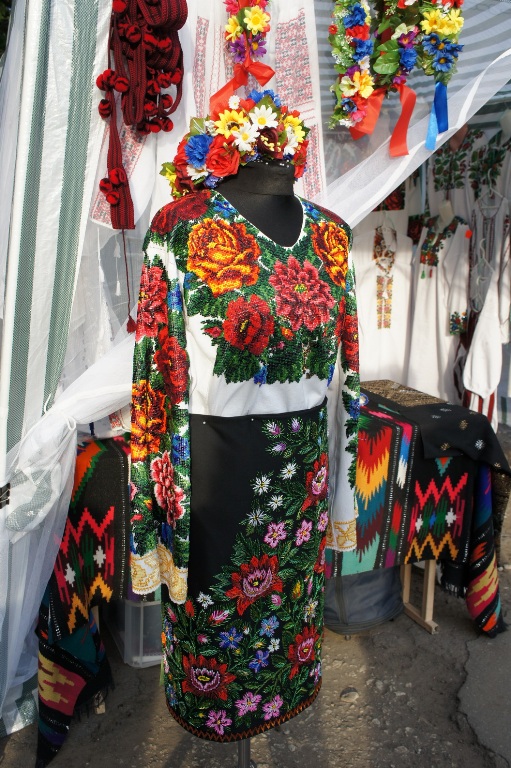 In the 14th-18th centuries, the main features characteristic of Ukrainian national clothing began to form among the Cossacks and peasants. From this time until the 20th century, national culture was mostly concentrated and developed in villages, where the atmosphere was more conducive to the preservation and continuation of traditions. Therefore, when we talk about the national costume of Ukrainians, we primarily mean the costume of peasants. It was necessarily complemented with various decorations on weekdays and holidays. Historical documents, paintings by painters, photographs and museum exhibits indicate that glass jewelry occupied a large place in clothing and made up entire complexes of decorations. Poor bourgeois and peasant women loved to decorate themselves with necklaces, rings, earrings - inexpensive jewelry, for the creation of which they took glass beads or rhinestones. This group of jewelry had very popular necklaces – they consisted of single-colored glass beads that looked like precious materials: pearls, turquoise, amber, emerald, ruby, coral, garnet. These decorations adorned the festive attire of Ukrainian peasant women of the 19th – 20th centuries. They were made of cast beads of industrial production, had black, milky white, green, blue, green, red, yellow, cherry and other colors. Sometimes they were used together with genuine corals.
In the 14th-18th centuries, the main features characteristic of Ukrainian national clothing began to form among the Cossacks and peasants. From this time until the 20th century, national culture was mostly concentrated and developed in villages, where the atmosphere was more conducive to the preservation and continuation of traditions. Therefore, when we talk about the national costume of Ukrainians, we primarily mean the costume of peasants. It was necessarily complemented with various decorations on weekdays and holidays. Historical documents, paintings by painters, photographs and museum exhibits indicate that glass jewelry occupied a large place in clothing and made up entire complexes of decorations. Poor bourgeois and peasant women loved to decorate themselves with necklaces, rings, earrings - inexpensive jewelry, for the creation of which they took glass beads or rhinestones. This group of jewelry had very popular necklaces – they consisted of single-colored glass beads that looked like precious materials: pearls, turquoise, amber, emerald, ruby, coral, garnet. These decorations adorned the festive attire of Ukrainian peasant women of the 19th – 20th centuries. They were made of cast beads of industrial production, had black, milky white, green, blue, green, red, yellow, cherry and other colors. Sometimes they were used together with genuine corals.
From the end of the 19th century, Ukrainian women's clothing began to be decorated with beads of blown glass - with a mirror shine, similar to Christmas tree decorations. They were quite cheap, and therefore accessible, they were called "fireflies", "flakes", "inflatables", and became very popular in the clothing of Ukrainian women, replacing other less shiny, but more expensive jewelry. This changed the aesthetic preferences of Ukrainian women, who believed that more shine gives clothes greater effect.
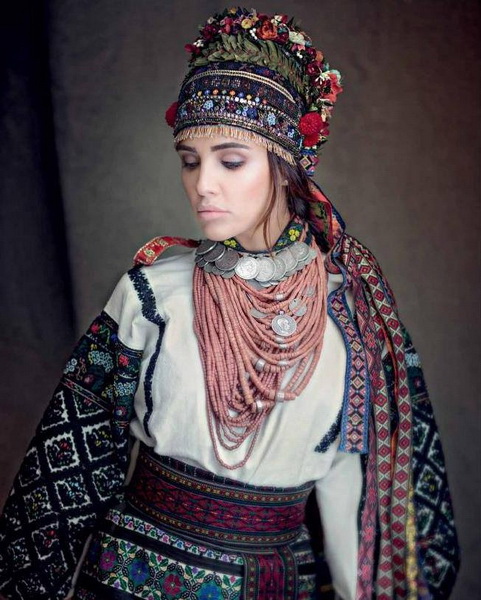 The folk festive attire of the Pokutyans, Hutsuls, or Bukovynas was decorated with “Venetian corals,” or “painted beads.” They were worn together with other jewelry, and they completed the ensemble, giving it a special look. Such jewelry was very expensive, a lot of effort went into its manufacture, because they were decorated by hand, and the materials were also not cheap. Round glass balls were made, 9-16 cm in diameter, the master painted them with colored enamels, inlaid them with gold, colored glass. The ball was covered with a very interesting ornament - straight and wavy lines, twists, dots, rings. The most expensive jewelry was a necklace strung from large beads, generously covered with gold.
The folk festive attire of the Pokutyans, Hutsuls, or Bukovynas was decorated with “Venetian corals,” or “painted beads.” They were worn together with other jewelry, and they completed the ensemble, giving it a special look. Such jewelry was very expensive, a lot of effort went into its manufacture, because they were decorated by hand, and the materials were also not cheap. Round glass balls were made, 9-16 cm in diameter, the master painted them with colored enamels, inlaid them with gold, colored glass. The ball was covered with a very interesting ornament - straight and wavy lines, twists, dots, rings. The most expensive jewelry was a necklace strung from large beads, generously covered with gold.
During the 19th and 20th centuries, beads were added to the necklace along with glass beads. Folk costumes took on a different sound. “Girdany”, “Gardyanyky”, “ Gerdany ”, “Golochki”, “Drobinky”, “Lanka”, “Luchki” and many other new names and decorations came into fashion. The oldest of these products are now kept in art museums, and date back to the 19th century. These products are made at a very high level of craftsmanship, which gives reason to think about the existence of a folk tradition of beaded jewelry as early as the 18th century.
How exactly this tradition developed is, unfortunately, impossible to trace. But there is an opinion that the spread of beaded jewelry in folk costumes may be associated with the use of beads in folk art, a sacred direction. This was done back in the days of Kievan Rus, beads were made of pearls or artificial materials - glass, metal. It is likely that the acquaintance of Ukrainian craftsmen with the artistic achievements of Western European countries played a major role in the development of beaded jewelry. It was there that the fashion for beads and artistic products from them reigned since the 18th century. There is an assumption that at that time, European beaded materials began to appear in the villages of the country, and not only in large cities: sklarus, beads, finished products from them. According to the chronicles of the second half of the 18th century, merchants from Bohemia, taking with them goods for sale, along with their beadwork, also took ready-made jewelry and household items, the most diverse in appearance, purpose and price. The tradition of making beaded jewelry and decorations for folk clothing was open to external influence, but developed in the style of national art, and this contributed to the formation of distinctive features in the craft that reflected the life and tastes of the Ukrainian people and Ukrainian culture.
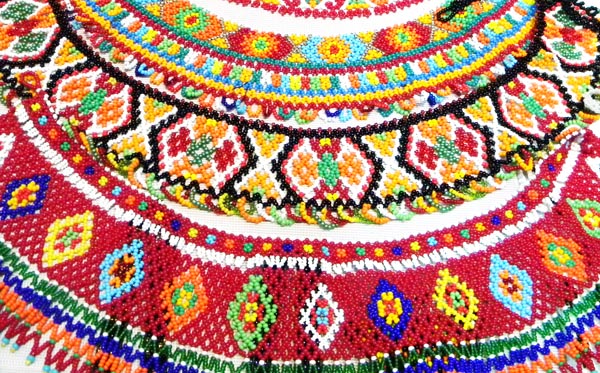 The first half of the 19th - mid-19th century - beaded decorations in folk clothing became widespread in some western lands, and at the end of the 19th century - in some places in the northern and central parts of Ukraine. Beaded traditions captured Western Podillia, Opillia, Pidhirtsi, Pokuttya, Hutsul, Lemko, Transcarpathia - the lower part, Northern Bukovina, Polissya, Volyn, Middle Dnieper, etc.
The first half of the 19th - mid-19th century - beaded decorations in folk clothing became widespread in some western lands, and at the end of the 19th century - in some places in the northern and central parts of Ukraine. Beaded traditions captured Western Podillia, Opillia, Pidhirtsi, Pokuttya, Hutsul, Lemko, Transcarpathia - the lower part, Northern Bukovina, Polissya, Volyn, Middle Dnieper, etc.
By the middle of the 20th century, the range of beaded jewelry was growing significantly, and craftsmanship and aesthetic principles were expanding.
In western Ukraine, in villages, beads were also used to embroider clothes for holidays. This tradition came from Europe. At the beginning of the 20th century, this needlework was very common in the folk art of countries west of Ukraine, for example, in Poland and Slovakia. Since the 1930s, bead embroidery of folk clothes has become especially interesting and used in Bukovina. Headgear, underwear, waist and upper clothing, shoes, leather belts.


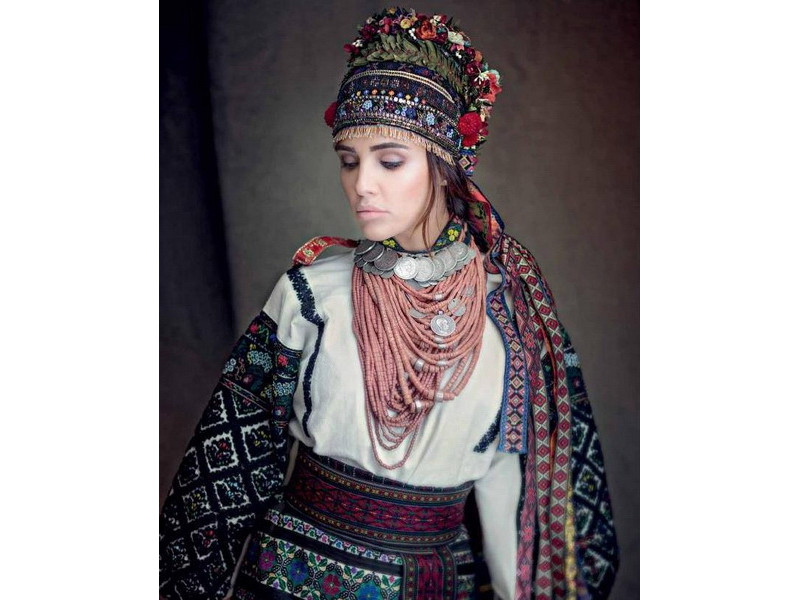
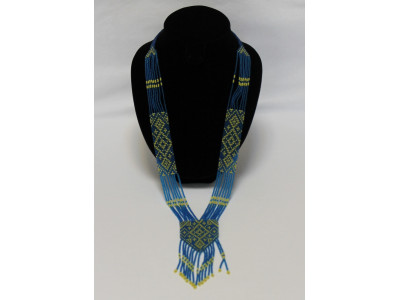
Write a comment